#Contractor Management System Software
Text
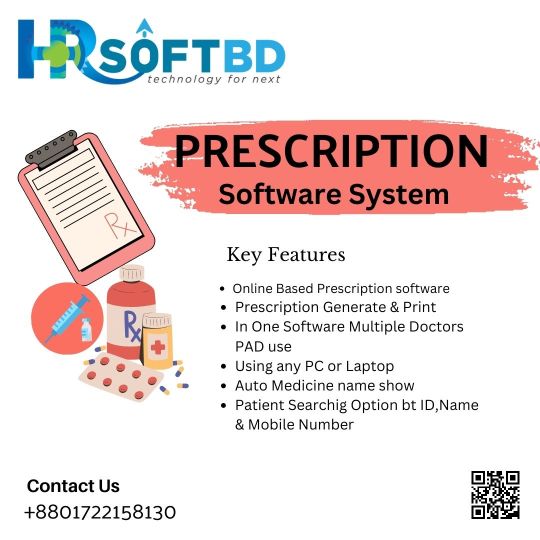
Prescription Software by HRsoftBD
#advocate dairy management bd#dynamicwebsite#ecommercedevelopment#onlinenewsportal#e education system#graphic design#accounting software bd#accountsoftwareforhajj#ballot counting software bd#coaching management software#contractor management system#couriermanagementsoftware#dairy farm software#diagnostic management software#digitallawfirmwebapplication#digitaleducationmanagementsystem#E-Class Web Application and Mobile App#ecommercesolutions#EMISschoolsoftware#Employee / Human Resource Management System#ERP Solution#Event Management Software#Finger print and face detection#Hospital Management Software#Hotel Management Software#HR & Accounts Software#Invoice Software#Marketing Sales Software#Online Coaching Management Software#Online Doctor Appointment
3 notes
·
View notes
Text
Maximizing Workforce Efficiency: How VMS Platforms Empower Direct Sourcing

One of the most significant developments in this space is the rise of Vendor Management Systems (VMS), which enable organizations to streamline the management of their contingent workforce. Paired with the growing trend of Direct Sourcing, VMS platforms are revolutionizing how businesses acquire and manage talent.
Understanding Vendor Management Systems (VMS)
A VMS platform is a software solution designed to manage all aspects of an organization’s contingent workforce, from vendor relationships to temporary staff hiring, performance tracking, and payment. It allows companies to centralize and automate processes that were traditionally handled manually or through various disparate systems. The benefits of a VMS platform include better visibility, improved cost control, enhanced compliance, and faster onboarding for contract workers.
The core function of a VMS is to manage third-party staffing vendors, but its utility has expanded as workforce management becomes more sophisticated. A modern VMS platform now also supports Direct Source strategies, enabling companies to build their own talent pools and reduce dependence on external staffing agencies.
Direct Sourcing: A Growing Trend
Direct Sourcing refers to the practice of directly hiring contingent workers from a company’s existing network or talent pool, rather than through external staffing vendors. This approach allows businesses to tap into a pre-vetted group of freelancers, contractors, and temporary workers without incurring the additional costs and markups associated with staffing agencies.
The benefits of Direct Sourcing are clear:
Cost Savings: By cutting out the middleman, companies can save on recruitment fees and vendor markups.
Faster Hiring: Companies with established talent pools can quickly access qualified candidates, reducing the time-to-hire.
Better Quality Control: Organizations have more control over the recruitment process and can ensure that they are hiring workers who align with their specific needs and culture.
How a VMS Platform Enhances Direct Sourcing
While Direct Sourcing provides significant advantages, it requires a strategic and organized approach to managing talent. This is where VMS platforms come in. By integrating Direct Sourcing capabilities into their VMS, companies can optimize the recruitment and management of contingent workers. Here’s how:
Building and Managing Talent Pools: VMS platforms allow companies to create and maintain internal talent pools, consisting of previous contractors, freelancers, and referrals. These workers are often already familiar with the company’s processes and culture, making them ideal candidates for future projects.
Seamless Integration with Workforce Management: A modern VMS platform integrates with HR, procurement, and finance systems, creating a seamless experience for hiring and managing contingent workers.
Automated Workflows: A key advantage of a VMS platform is the automation of recruitment workflows.
Compliance and Risk Management: Hiring contingent workers, particularly across multiple jurisdictions, introduces a range of legal and compliance risks.
Data-Driven Decision Making: VMS platforms provide real-time analytics and reporting, giving companies valuable insights into their contingent workforce.
The Future of VMS and Direct Sourcing
As the contingent workforce continues to grow, the combination of Vendor Management System platforms and Direct Sourcing will become even more integral to workforce management strategies. Emerging technologies such as Artificial Intelligence (AI) and Machine Learning (ML) will further enhance VMS capabilities, enabling predictive workforce planning, talent matching, and real-time decision-making.
Conclusion
The integration of VMS platforms and Direct Sourcing is transforming how businesses manage their contingent workforce. By centralizing and automating key processes, VMS platforms empower organizations to take control of their talent acquisition strategies, reducing costs, improving efficiency, and ensuring compliance. As Direct Sourcing continues to gain popularity, businesses that effectively leverage their VMS will be well-positioned to stay competitive and responsive to changing market demands. The future of workforce management is one where agility and efficiency go hand in hand, and VMS platforms are at the heart of this transformation.
[REVEALED]: 7 Questions You Must Ask In 2024 Before Investing in a VMS
Top 6 Reasons Why You Should Absolutely Invest in a VMS
What is the Importance of Credentialing in Healthcare?
#b2bmarketing#b2b services#business#hr software#success#vms#vendors#technology#directsourcing#recruiting solutions#compliance#talentacquisition#contractors#applicant tracking system#management#workforce#contractmanagement#vendor company#best vendor replica yupoo#automation#usa#hr solutions#vendor management solutions#vendor management software#contingentworkforce#vendor management tools#vendormanagement#procurement#ai#job interview
0 notes
Text
Streamlining Construction Projects with an Efficient Construction Management System
Introduction: In the intricate realm of construction projects, effective management is paramount for success. From planning to execution, every phase demands meticulous coordination and workforce management oversight. This is where a robust Construction Management System (CMS) steps in, serving as the backbone of project operations. In this comprehensive guide, we delve into the essence of CMS, its functionalities, and how it revolutionizes the construction industry.
Understanding Construction Management System: A Construction Management System is a digital platform designed to streamline and optimize the various facets of workforce management software construction projects. It integrates project planning, resource allocation, communication channels, document management, and financial tracking into a centralized platform. By consolidating these critical elements, CMS enhances collaboration, efficiency, and transparency throughout the project lifecycle.
Key Features and Functionalities:
Project Planning and Scheduling: CMS facilitates meticulous project planning by enabling users to create Smart Wearables detailed schedules, allocate resources, and set milestones. This ensures that all stakeholders are aligned with project timelines and deliverables.
Resource Management: Efficient allocation of resources, including labor, materials, and equipment, is vital for project success. CMS provides real-time visibility into resource availability, utilization, and allocation, allowing project managers' workforce software to optimize resource usage and minimize wastage.
Document Management: In the construction industry, a multitude of documents, including blueprints, contracts, permits, and invoices, need to be managed efficiently. CMS centralizes document storage, version control, and access permissions, daily reporting streamlining document management and ensuring that stakeholders have access to the latest information.
Communication and Collaboration: Effective communication is the cornerstone of successful construction projects. CMS provides various communication channels, such as instant messaging, discussion forums, and project updates, fostering seamless collaboration among team members, subcontractors, and clients.
Budgeting and Financial Tracking: Managing project finances is complex, with multiple cost elements to access control track and monitor. CMS simplifies budgeting, expense tracking, and financial reporting, enabling project managers to stay within budgetary constraints and make informed financial decisions.
Risk Management: Construction projects are inherently prone to risks, ranging from delays and cost Fall detection overruns to safety hazards and regulatory compliance issues. CMS helps identify, assess, and mitigate risks through proactive risk management strategies, minimizing disruptions and enhancing project resilience.
Quality Control: Ensuring high-quality construction outcomes is imperative for customer satisfaction and project success. CMS incorporates quality control processes, including inspections, audits, and defect tracking, to maintain stringent quality standards throughout the project lifecycle.
Mobility and Accessibility: With fatigue management solutions the increasing prevalence of mobile technology, construction teams need access to project information anytime, anywhere. CMS offers mobile applications and cloud-based platforms, empowering users to manage projects remotely and stay connected on the go.
Reporting and Analytics: Data-driven insights are invaluable for optimizing project performance and decision-making. CMS generates comprehensive reports and analytics dashboards, providing stakeholders with real-time visibility into project metrics, performance trends, and key performance indicators (KPIs).
Benefits of Implementing a Construction Management System:
Improved Efficiency: Streamlined workflows and centralized data management enhance operational efficiency and productivity.
Enhanced Collaboration: Seamless communication and collaboration foster teamwork and Environmental edge sensor alignment among project stakeholders.
Cost Savings: Effective resource management, budget tracking, and risk mitigation contribute to cost savings and improved project profitability.
Increased Transparency: Transparent processes and real-time reporting promote accountability and trust among project participants.
Better Decision-Making: Data-driven insights enable informed decision-making and proactive problem-solving.
Faster Project Delivery: Streamlined processes and optimized workflows accelerate project timelines and delivery schedules.
Enhanced Quality: Rigorous quality control measures ensure adherence to quality standards and deliver superior construction outcomes.
Reduced Risks: Proactive risk management minimizes project risks and uncertainties, safeguarding against potential disruptions.
Customer Satisfaction: Delivering projects on time, within budget, and to quality specifications enhances client satisfaction and strengthens relationships.
Conclusion: In an industry as dynamic Real-time location and challenging as construction, leveraging technology is essential for staying competitive and delivering successful projects. A Construction Management System catalyzes transformation, empowering construction firms to optimize processes, enhance collaboration, mitigate risks, and deliver exceptional outcomes. By embracing CMS, construction professionals can navigate complex projects with confidence, efficiency, and agility, paving the way for sustainable growth and innovation in the construction industry.
#workforce management#workforce management software#workforce software#daily report#real-time location system#contractor management
0 notes
Text
Lowes IMS Portal - Maximize its Efficiency
Introducing Lowe’s Installer Management System (IMS): Revolutionizing Communication and Efficiency
Lowe’s Installer Management System (IMS) is a comprehensive platform designed to streamline operations for installer teams and Lowe’s alike. By automating processes, sharing crucial job information, and facilitating seamless appointment scheduling, Lowe’s IMS eliminates communication errors and enhances overall efficiency.
While Lowe’s IMS offers considerable value, it's important to acknowledge that it may not fulfill all the requirements of installation businesses, particularly those operating beyond the scope of Lowe's projects. Installers often need additional tools to effectively manage scheduling, paperwork, finances, and communication across various projects.
Identifying Gaps and the Imperative for Integration
To effectively manage non-Lowe's projects, installation companies often require supplementary software solutions to facilitate seamless communication with field teams, ensure completion of paperwork, and manage financial aspects. Here are key areas where Lowe’s IMS could benefit from integration with complementary software:
Job Scheduling: Optimal efficiency in installation businesses hinges on having all pertinent information accessible through a single interface. This enables informed decision-making and enhances visibility into crew schedules. However, for non-Lowe's contractors, achieving this unified visibility poses a challenge within Lowe’s IMS.
Communication with Crew: Smooth workflow relies on effective communication among installation teams. Centralizing site images, relevant documents, and job notes within a single platform enhances collaboration. Yet, Lowe’s project management software currently provides this functionality exclusively to registered installation teams.
Accounts Integration: Managing finances efficiently is paramount, with QuickBooks being a prominent tool in this regard. However, Lowe’s IMS lacks integration capabilities with such tools, leaving independent installation teams without a standalone financial management solution.
Augmenting Lowe’s IMS with ProjectsForce Integration
To unlock the full potential of Lowe’s IMS, integrating additional solutions like ProjectsForce can be immensely beneficial. ProjectsForce offers installer teams a unified interface to manage all their processes seamlessly. Whether registered with Lowe’s or operating independently, ProjectsForce automates processes, streamlines communication, and enhances efficiency across projects.
In conclusion, while Lowe’s IMS provides a solid foundation for communication and scheduling within Lowe’s projects, integration with supplementary software solutions is essential for installation businesses to thrive in diverse operational contexts. ProjectsForce integration stands as a prime example of how augmenting Lowe’s IMS capabilities can empower installer teams to excel beyond the confines of Lowe’s projects.
Content Source: Projectsforce.com
#ProjectsForce#Lowe’s#field service software#hvac contractor#field service management software#home improvement#project management software#flooring software#Lowe’s IMS#Lowe’s Installer Management System#Lowe’s Project Management Software
1 note
·
View note
Text
INTERAC Software for Construction
An integrated suite of financial and management software applications for construction contractors.
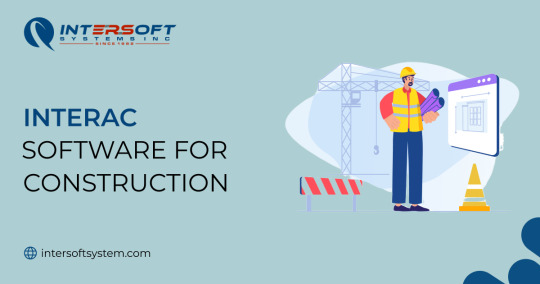
The INTERAC Construction Accounting suite is much more than just an accounting system. It is a tightly integrated, flexible, user friendly suite of job cost accounting and construction management applications which will enable your team to become even more productive and your business more profitable.
Job Cost & Job Manager
Job Cost is the core of the system which gathers job related information from the other applications and provides a wealth of construction management information to help you control costs and enhance profitability.
Job Manager provides project managers, estimators and the management team with an instant snapshot of the jobs with the ability to drill down to the transaction level detail at the click of a mouse. With the integrated Document Management System and reporting tools, everything you need to know is readily available. (see video below)
Accounting
The INTERAC core accounting applications are tailored to the needs of the construction trades, so that all the job related information automatically flows directly into the Job Cost system.
Accounts Payable automates the lien waiver process
Payroll supports multi-state, union, prevailing wage (certified)
Job Billing generates AIA, T&M, free form, and contract billing invoices
Subcontractor Control
For general contractors, managing subcontractors and all their contracts is critical.
The integrated INTERAC Subcontractor Control application makes it easy to:
Manage contracts
Track change orders
Monitor Payments
Control retainage
Track each subcontractor's liability insurance status.
Service Billing
Many specialty contractors not only provide new construction services, but they also need to maintain their installations after the fact. Service Billing is an excellent tool to manage ongoing maintenance contracts.
INTERAC Service Billing provides:
Work Order management - Convert completed work orders to invoices
Management of maintenance contracts
Supports serialized inventory & warranty tracking
Invoicing for contract, time and material, and recurring billing
Equipment Cost & Equipment Manager
For heavy contractors, managing equipment is critical. The integrated INTERAC Equipment Cost system makes it easy to monitor cost, revenue, maintenance, and road taxes. An integrated maintenance work order system streamlines the routine maintenance process.
Equipment Manager puts all the detailed information from the Equipment Cost system in a very user friendly interface. Whether it is a manager who wants to see P&L information, a shop foreman who needs to monitor maintenance, or a project manager wanting to confirm billable equipment hours, all this data is readily available at the click of a mouse.
Inventory Management
The INTERAC Inventory system is tightly integrated with Job Cost and Service Billing to provide seamless inventory control. Whether you need to manage multiple warehouses, or inventory on a fleet of service vehicles, the INTERAC Inventory suite will make it a breeze.
Selecting the Right System
We appreciate your interest, and welcome the opportunity to introduce the INTERAC Construction Accounting System.
For more information or assistance, feel free to contact us at 800-547-6429 or email [email protected].
For more information, visit - https://www.intersoftsystems.com/interac-for-construction.html
Tags - Construction Accounting System, Subcontractor Control application, financial and management software applications for construction, accounting software for construction contractors, accounting software for general contractors, subcontractor accounting software, general contractor accounting software, accounting construction software, accounting software for construction contractors, construction management accounting software, construction management accounting, contractors accounting software
#Construction Accounting System#Subcontractor Control application#financial and management software applications for construction#accounting software for construction contractors#accounting software for general contractors#subcontractor accounting software#general contractor accounting software#accounting construction software#construction management accounting software#construction management accounting#contractors accounting software
0 notes
Text

#Dynamic Website#E-Commerce Development#e education system#Graphic Design#Accounting Software#Account Software For Hajj#Advocate Diary Management System#Ballot Counting Software#Coaching Management Software#Contractor Management System#Courier Management Software Solutions#Dairy Farm Software#Diagnostic Management Software#Digital Law Farm Web Application#Digital Education Management System#E-Class Web Application and Mobile App#E-Commerce Solution#EMIS (School Software)#Employee / Human Resource Management System#ERP Solution#Event Management Software
0 notes
Text
Contractor Management System By HRsoft BD
http://hrsoftbd.com/service-details/contractor-management-system
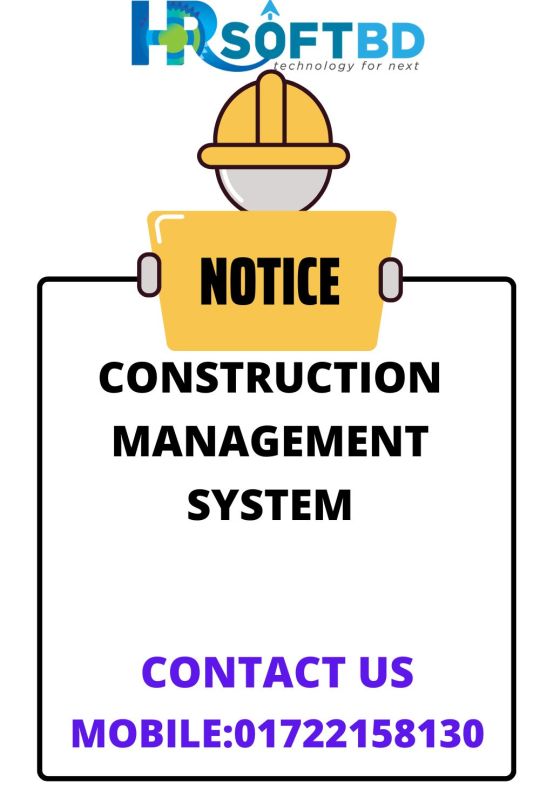
#online education#ballot counting software#coaching management software#contrctor management software#Vehicle Fleet Management Software#Time Attendance Software With SMS#Dynamic Website#Graphic Design#E-Education System#Online News Portal#E-Commerce Development#Ballot Counting Software#Advocate Diary Management System#Account Software For Hajj#Accounting Software#Dairy Farm Software#2#Courier Management Software Solutions#Contractor Management System#Employee / Human Resource Management System#EMIS (School Software)E-Commerce Solution#E-Class Web Application and Mobile App#Digital Education Management System#Digital Law Farm Web Application#EMIS (School Software)#E-Commerce Solution#Hotel Management Software#Hospital Management Software#Finger print and face detection#Event Management Software
1 note
·
View note
Text
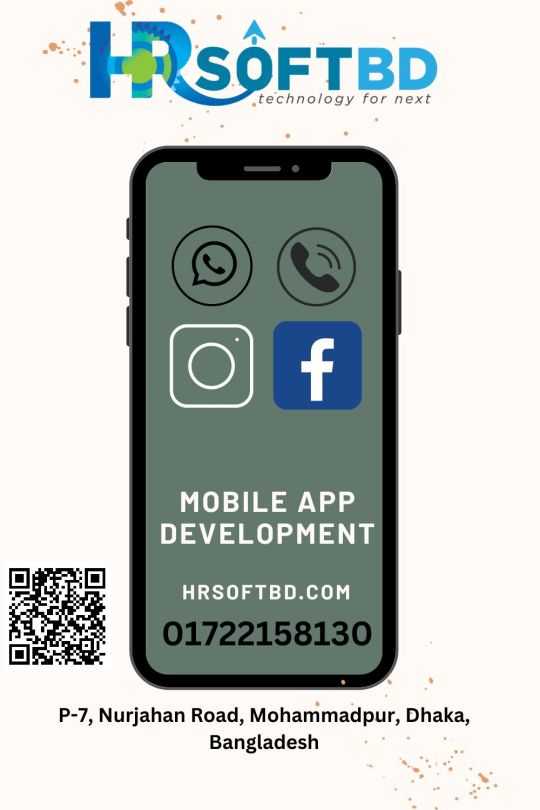
hrsoftbd #accountingsoftwareBD #bulksmsbangladesh
websitedevelopmentBD #websitedesignBD #appdevelopmentBD
appdesignBD #omrsoftwar #OMRSolution #AccountSoftwaredevelopmentBD
mobileappdesignBD #appdevelopmentBD
MobileAppDevelopmentBD
#Dynamic Website#E-Commerce Development#Online News Portal#E-Education System#Graphic Design#Accounting Software#Account Software For Hajj#Advocate Diary Management System#Ballot Counting Software#Coaching Management Software#Contractor Management System#Courier Management Software Solutions#Dairy Farm Software#Diagnostic Management Software#Digital Law Farm Web Application
1 note
·
View note
Text

Contractor Management System Software by HRsoft BD
#hrsoftbd#accountingsoftwareBD#bulksmsbangladesh#websitedevelopmentBD#websitedesignBD#appdevelopmentBD#appdesignBD#omrsoftwar#OMRSolution#AccountSoftwaredevelopmentBD#mobileappdesignBD#MobileAppDevelopmentBD app#Accounting Software#Account Software For Hajj#Advocate Diary Management System#Ballot Counting Software#Coaching Management Software#Contractor Management System#Courier Management Software Solutions#Dairy Farm Software#Diagnostic Management Software#Digital Law Farm Web Application#Digital Education Management System#E-Class Web Application and Mobile App#E-Commerce Solution#EMIS (School Software)#Employee / Human Resource Management System#ERP Solution#Event Management Software#Finger print and face detection
0 notes
Text
Contractor Workforce Management Software in India - Infotrack
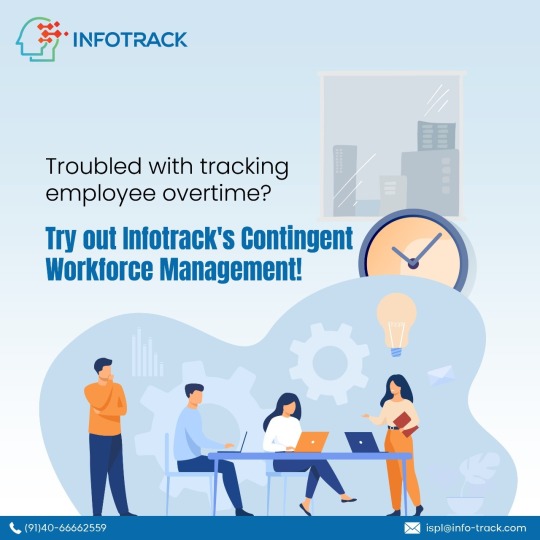
Contractor workforce management software is a type of software designed to help businesses manage their contingent workforce, which includes contractors, freelancers, and temporary workers. Software features such as job posting and tracking, onboarding, time and payroll management, compliance tracking, and performance evaluation. Contact Infotrack Systems for contingent workforce management software in India.
#contingent workforce management software#contractor workforce management software#contractor workforce management software in India#infotrack systems#contractor workforce management
0 notes
Text

Prescription Software by HRsoft BD
#advocate dairy management bd#dynamicwebsite#ecommercedevelopment#onlinenewsportal#e education system#graphic design#accounting software bd#accountsoftwareforhajj#ballot counting software bd#coaching management software#contractor management system#couriermanagementsoftware#dairy farm software#diagnostic management software#digitallawfirmwebapplication#digitaleducationmanagementsystem#E-Class Web Application and Mobile App#ecommercesolutions#EMISschoolsoftware#Employee / Human Resource Management System#ERP Solution#Event Management Software#Finger print and face detection#Hospital Management Software#Hotel Management Software#HR & Accounts Software#Invoice Software#Marketing Sales Software#Online Coaching Management Software#Online Doctor Appointment
3 notes
·
View notes
Text
Best contractor management ERP software to maintain a list of contractors, Given projects, contract billing, project budget etc
For more information you can call now: 9009155444
#contractor management erp software#contractor management software#contractor project management software#contract management system software#best erp software#best erp software in indore#best construction erp software#best construction erp software indore#best construction management software#best construction project management software#best financial management software#best financial management software in indore#best hr management software#best hr management software in indore#best online financial management software#cloud based financial management software#cloud based hr software#construction management erp software#erp financial management software#machinery vehicle management software#machinery vehicle management software in indore#production & fibc management software in indore#production & fibc management software#fibc management software#fibc management software in indore#store management software#store management system#store inventory management software#online store management system#sales management software
0 notes
Text
Purchase the contractor management system.
You can manage all contractor-related data with contractor management software. Using this, legally binding contracts are created, negotiated, signed, and their data are analysed.

#contractor management software#management system software#visitor control system#visitor management software#visitor identification system
0 notes
Text
The Top UK Card Printers
We offer card printers that can print on the front and back of ID cards, as well as other documents and pass holders. Businesses frequently choose this option since it offers more room for information and features.
#Contractor Management Software#Visitor Pass Printers#Visitor Pass Management System#Web Based Visitor Management System UK
0 notes
Text
INTERAC Software for Construction

An integrated suite of financial and management software applications for construction contractors.
The INTERAC Construction Accounting suite is much more than just an accounting system. It is a tightly integrated, flexible, user friendly suite of job cost accounting and construction management applications which will enable your team to become even more productive and your business more profitable.
Job Cost & Job Manager
Job Cost is the core of the system which gathers job related information from the other applications and provides a wealth of construction management information to help you control costs and enhance profitability.
Job Manager provides project managers, estimators and the management team with an instant snapshot of the jobs with the ability to drill down to the transaction level detail at the click of a mouse. With the integrated Document Management System and reporting tools, everything you need to know is readily available. (see video below)
Accounting
The INTERAC core accounting applications are tailored to the needs of the construction trades, so that all the job related information automatically flows directly into the Job Cost system.
Accounts Payable automates the lien waiver process
Payroll supports multi-state, union, prevailing wage (certified)
Job Billing generates AIA, T&M, free form, and contract billing invoices
Subcontractor Control
For general contractors, managing subcontractors and all their contracts is critical.
The integrated INTERAC Subcontractor Control application makes it easy to:
Manage contracts
Track change orders
Monitor Payments
Control retainage
Track each subcontractor's liability insurance status.
Service Billing
Many specialty contractors not only provide new construction services, but they also need to maintain their installations after the fact. Service Billing is an excellent tool to manage ongoing maintenance contracts.
INTERAC Service Billing provides:
Work Order management - Convert completed work orders to invoices
Management of maintenance contracts
Supports serialized inventory & warranty tracking
Invoicing for contract, time and material, and recurring billing
Equipment Cost & Equipment Manager
For heavy contractors, managing equipment is critical. The integrated INTERAC Equipment Cost system makes it easy to monitor cost, revenue, maintenance, and road taxes. An integrated maintenance work order system streamlines the routine maintenance process.
Equipment Manager puts all the detailed information from the Equipment Cost system in a very user friendly interface. Whether it is a manager who wants to see P&L information, a shop foreman who needs to monitor maintenance, or a project manager wanting to confirm billable equipment hours, all this data is readily available at the click of a mouse.
Inventory Management
The INTERAC Inventory system is tightly integrated with Job Cost and Service Billing to provide seamless inventory control. Whether you need to manage multiple warehouses, or inventory on a fleet of service vehicles, the INTERAC Inventory suite will make it a breeze.
Selecting the Right System
We appreciate your interest, and welcome the opportunity to introduce the INTERAC Construction Accounting System.
For more information or assistance, feel free to contact us at 800-547-6429 or email [email protected].
For more information, visit - https://www.intersoftsystems.com/interac-for-construction.html
#Construction Accounting System#Subcontractor Control application#financial and management software applications for construction#accounting software for construction contractors#accounting software for general contractors#subcontractor accounting software#general contractor accounting software#accounting construction software#construction management accounting software#construction management accounting#contractors accounting software
0 notes
Text
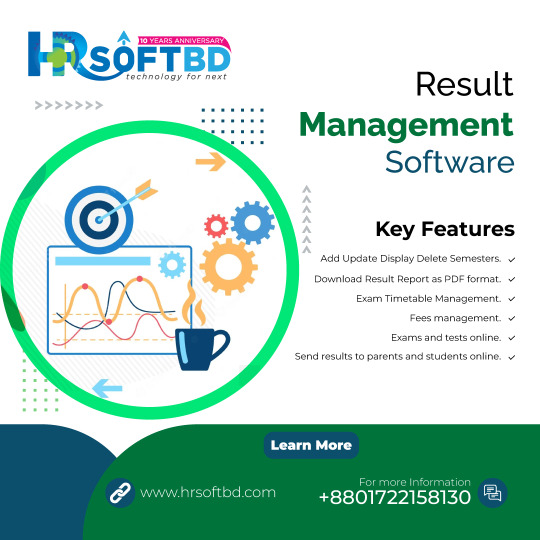
#Dynamic Website#E-Commerce Development#e education system#Graphic Design#Accounting Software#Account Software For Hajj#Advocate Diary Management System#Ballot Counting Software#Coaching Management Software#Contractor Management System#Courier Management Software Solutions#Dairy Farm Software#Diagnostic Management Software#Digital Law Farm Web Application#Digital Education Management System#E-Class Web Application and Mobile App#E-Commerce Solution#EMIS (School Software)#Employee / Human Resource Management System#ERP Solution#Event Management Software
0 notes